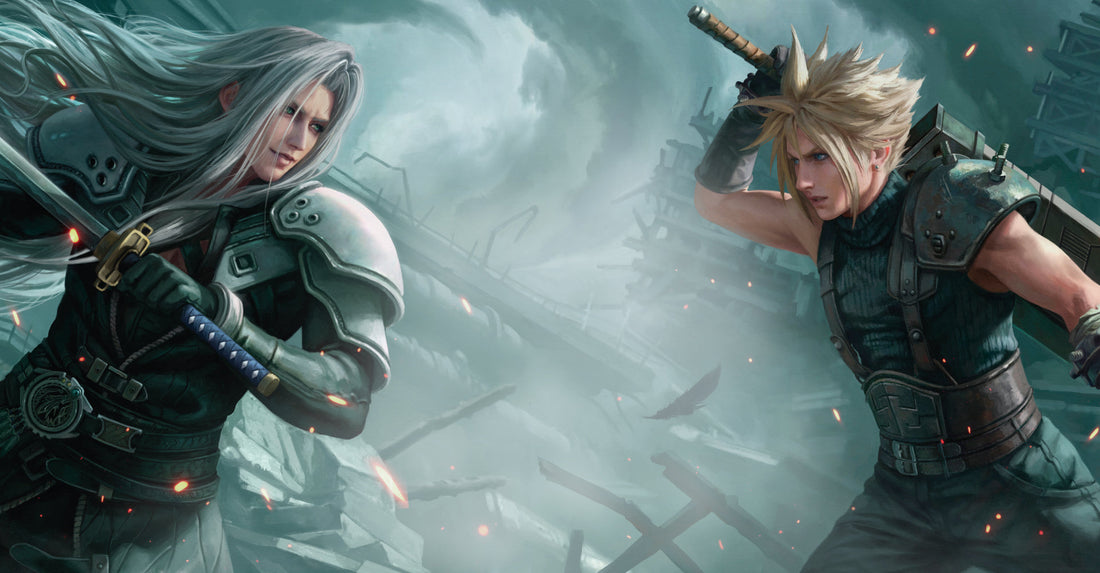
Final Fantasy's Grand Entrance: A New Era for Magic: The Gathering
Share
The collision of two titans of fantasy, Magic: The Gathering and Final Fantasy, has sent shockwaves through the trading card game community. The highly anticipated "Universes Beyond" set, released in June 2025, has not only captivated a legion of new and returning players but has also left an indelible mark on the game's economy and competitive landscape. From soaring prices for coveted collector's items to a palpable shift in the metagame, the Final Fantasy set is proving to be one of the most impactful releases in Magic's storied history.




The initial reception to the Final Fantasy set has been overwhelmingly positive, particularly from fans of the iconic video game franchise. The meticulous detail in translating beloved characters, summons, and moments into the mechanical framework of Magic has been widely praised. The set's designers have demonstrated a deep understanding and reverence for the source material, a factor that has undoubtedly contributed to its immense commercial success. Reports indicate that the Final Fantasy set is on track to be one of the best-selling Magic products of all time, with pre-order demand reaching unprecedented levels.
This fervent excitement, however, has come at a premium. The manufacturer's suggested retail price for booster packs and Commander decks was noticeably higher than for standard sets, a trend that was amplified in the secondary market. The thirst for special edition cards, such as the serialized "Crystal" versions of popular characters and the extended art "Ifrit" treatments, has driven prices to staggering heights. Collector booster boxes, in particular, have seen a meteoric rise, often fetching double or even triple their initial retail price. While the cost of entry has been a point of contention for some long-time players, the allure of owning a piece of this historic crossover has, for many, outweighed the financial sting.
The influx of powerful new cards has inevitably reshaped the state of the game across multiple formats. In Standard, the premiere rotating format, several Final Fantasy cards have already made their presence felt. The "Limit Break" mechanic, a flavorful nod to the video game series, has introduced a new layer of strategic depth, rewarding players for carefully timing their powerful spells. New archetypes have begun to emerge, centered around the unique abilities of legendary characters like Cloud Strife, Sephiroth, and Yuna. The set has injected a fresh dynamism into a Standard environment that some had perceived as growing stale.
Beyond Standard, the impact has been just as significant. The Commander format, a casual multiplayer format that thrives on creativity and self-expression, has wholeheartedly embraced the Final Fantasy legends. The four pre-constructed Commander decks, each themed around a different Final Fantasy game, have been lauded for their cohesive designs and powerful new cards. These decks have provided an accessible entry point for Final Fantasy fans new to Magic, while also offering a treasure trove of exciting new options for seasoned deck builders.
In the more competitive eternal formats of Modern and Legacy, the set's influence is still coalescing, but a few key cards have already begun to make waves. The raw power of certain mythic rares and the unique utility of some of the set's more niche designs are being tested in the crucible of high-level play. While it is still early days, it is clear that the Final Fantasy set is not merely a collection of fan service, but a wellspring of competitively viable cards that will continue to shape the metagame for years to come.
The "Through the Ages" bonus sheet, a collection of reprints of popular Magic cards with Final Fantasy art and flavor, has also had a notable effect on the market.8 While these reprints have made some sought-after cards more accessible, the unique Final Fantasy treatment has, in many cases, created a new premium for these alternate versions. This has led to an interesting dynamic where the original printings of some cards have seen a slight dip in price, while their Final Fantasy counterparts command a significant premium.
In conclusion, the Final Fantasy set for Magic: The Gathering represents a watershed moment for the game. It has successfully bridged the gap between two passionate fanbases, resulting in a product that is both a commercial juggernaut and a compelling gameplay experience. While the initial price surge has been a barrier for some, the long-term health of the game has been invigorated by a wave of new players and a revitalized competitive scene. The echoes of this crossover will be felt for a long time, not just in the rising value of cardboard, but in the new stories being told across countless kitchen tables and tournament halls. The world of Magic has been irrevocably changed, and for many, it is a change for the better.
